Create a harmonious living space with our Feng Shui tips, transforming your living room into a peaceful and productive sanctuary.
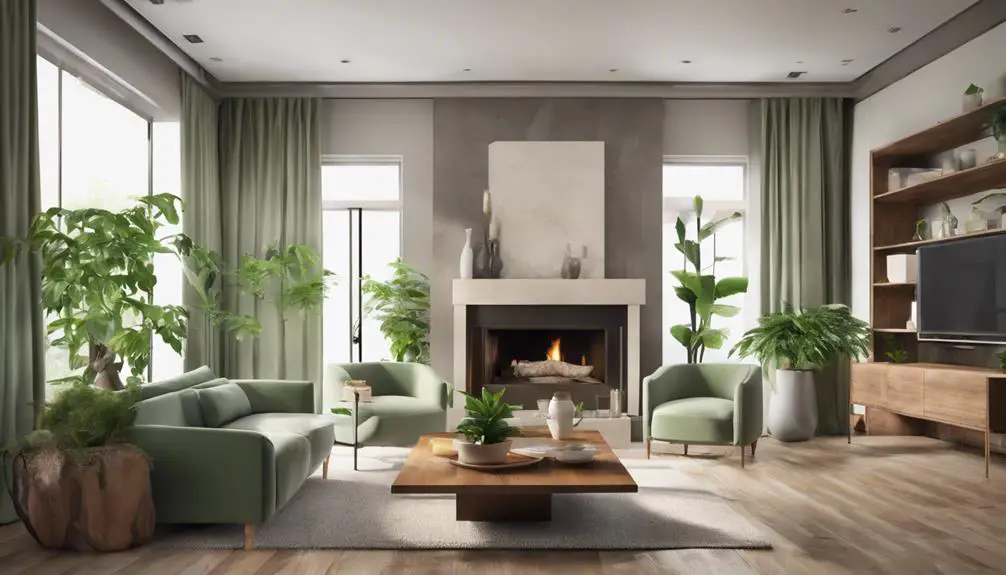
Feng Shui My Living Room
Sure, you might think Feng Shui is all about moving your couch to face the door and voila – you're an expert in ancient Chinese philosophy. But, let's get real. There's a lot more to it than that.
It's about balancing energies, creating positive flow, and transforming your living room into a sanctuary of peace and productivity.
You're probably wondering, 'How does one achieve this mystical harmony?' Stick around, and we'll uncover the secrets together.
Key Takeaways
- Transform your living room into a peaceful, productive sanctuary using Feng Shui principles of balance and energy flow.
- Balance the five essential Feng Shui elements—earth, metal, water, wood, and fire—in your living room to foster positive energy.
- Arrange furniture optimally, considering room orientation and scaling, for a smooth, welcoming pathway of energy.
- Incorporate Feng Shui colors and accessories like earth tones, fiery reds, and mirrors to influence mood and enhance energy flow.
Understanding the Basics of Feng Shui
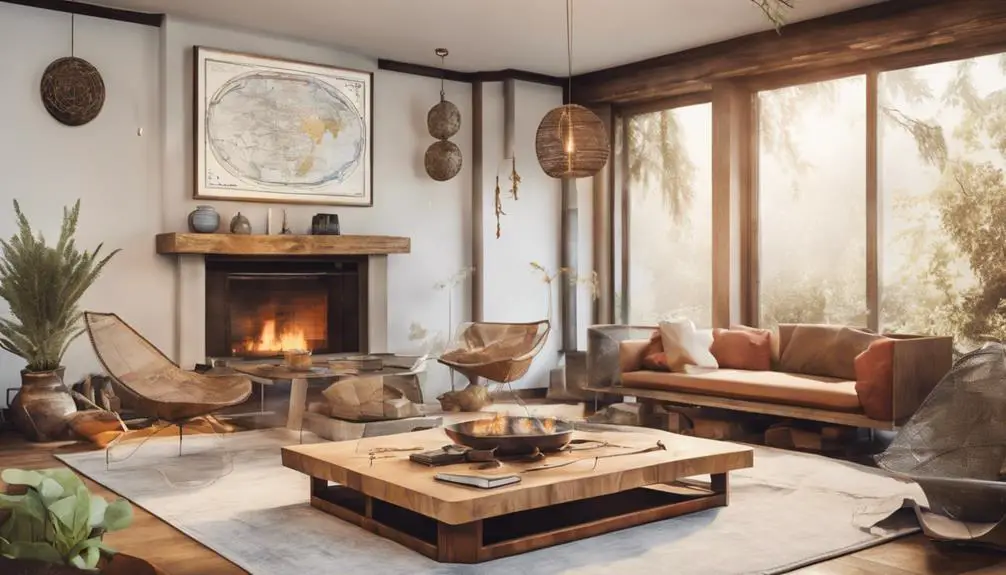
To truly grasp the art of Feng Shui for your living room, it's crucial to understand its core principles and how they influence the energy flow within your space. You're not just rearranging furniture or adding some plants; you're creating a harmonious environment that can improve your well-being.
There are a few Feng Shui misconceptions that you should be aware of as a beginner. First, Feng Shui isn't a quick fix or a magical cure-all. It's a philosophy and a way of life that requires time, patience, and a deep understanding of its principles. Second, it's not about copying a certain style or layout. The goal is to create a space that reflects your personality and meets your specific needs.
As for the initial steps for beginners, start by decluttering your space. Clutter can block the flow of energy, so rid your living room of anything that doesn't serve a purpose or spark joy. Then, learn about the Bagua, the Feng Shui energy map, and apply its principles to your living room layout. Remember, Feng Shui is a journey, not a destination. It's about continually striving to create balance and harmony in your space.
Essential Feng Shui Elements
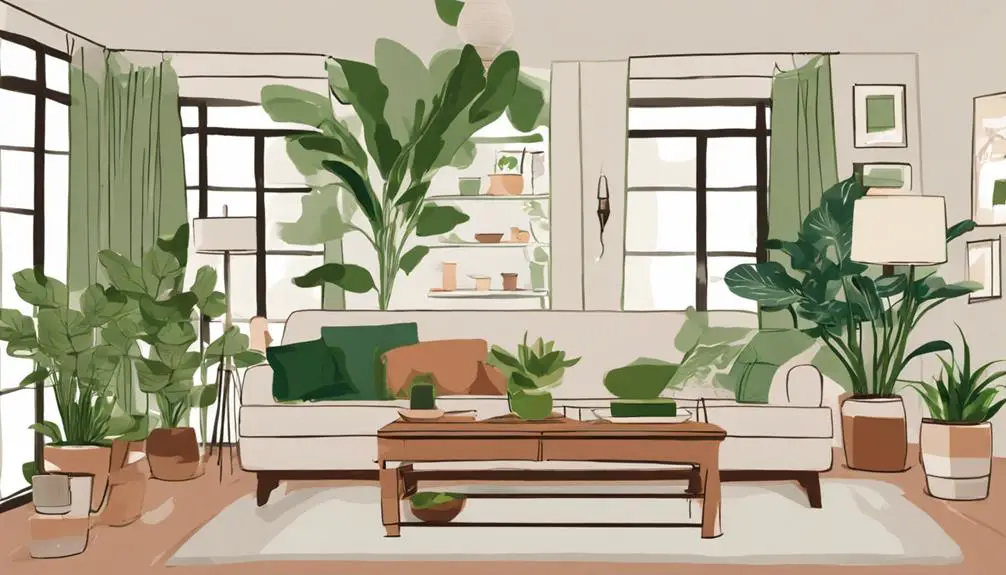
Diving into the five essential Feng Shui elements – earth, metal, water, wood, and fire – can truly transform your living space into a haven of positive energy and balance. Your room's atmosphere can be considerably enhanced by understanding these elements and incorporating Feng Shui materials that symbolize them.
Earth represents stability and nourishment. You can introduce this element by using earthy tones and ceramics. Metal, symbolizing clarity and precision, can be integrated using metallic accents, white colors, or round shapes.
Water embodies wisdom and serenity. Reflecting surfaces, free-form shapes, or mirrors can be used to invite this element. For the wood element, symbolizing growth and vitality, consider incorporating plants or wooden furniture. Fire, representing passion and high energy, can be brought in with candles, electronics, or animal prints.
Element placement strategies are crucial in Feng Shui. For instance, the fire element should be placed in the south, wood in the east, and earth in the centre. Metal should be located in the west, and water in the north. By thoughtfully integrating these elements, you'll not only create a visually appealing space but also one that vibrates with positive energy.
Balancing Your Living Room Energy
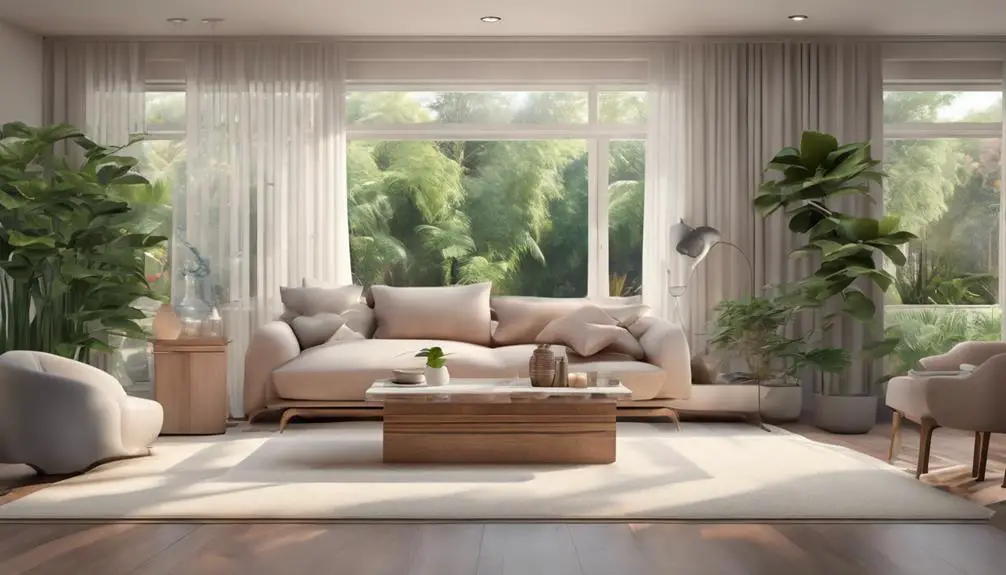
Having mastered the integration of essential Feng Shui elements in your living room, you're ready to up the ante by focusing on balancing the energy in this space. This stage is all about energy flow optimization, harmonizing the forces, and creating a tranquil environment that resonates with positive vibes.
Start by identifying sources of negative energy. Does your living room have sharp corners, clutter, or poorly lit areas? These can disrupt the chi flow, creating an imbalance. Address these issues promptly, aiming at improving the Chi circulation.
Next, consider the elements of earth, metal, water, wood, and fire. They should be in balance, representing stability, precision, flow, growth, and passion, respectively. You may need to add or remove items to achieve this harmony.
Colors also play a crucial role in balancing energy. Choose colors that inspire the desired emotion. For instance, blue can bring calming energy, while red can stimulate activity and conversation.
Lastly, don't forget the importance of natural light and fresh air. They're essential for a vibrant, energized living space. Use mirrors to reflect light and open windows for air circulation.
Feng Shui Furniture Arrangement Tips
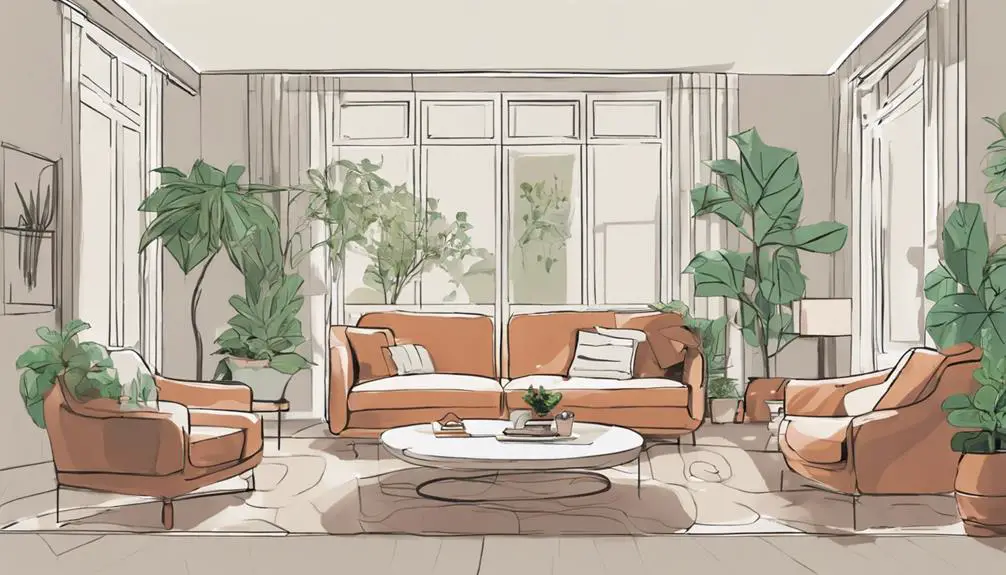
Let's plunge into the art of arranging your furniture in accordance with Feng Shui principles, optimizing not just aesthetics, but also energy flow. Room orientation and furniture scaling are crucial aspects of this ancient practice. When it comes to room orientation, place your biggest furniture against the wall farthest from the entrance to create a welcoming pathway for positive energy.
Furniture scaling, on the other hand, is about maintaining balance. Your furniture pieces should not dwarf the room or each other. A room crammed with oversized furniture can disrupt the energy flow, creating a sense of unease.
To guide you further, here's a simple 2-column and 5-row table:
| Room Orientation | Furniture Scaling |
|---|---|
| Sofa against far wall | Match sofa and coffee table height |
| TV opposite sofa | Scale furniture to room size |
| Bed against solid wall | Match bed and nightstand height |
| Desk facing door | Keep desk and chair proportionate |
| Dining table in center | Balance dining table with chairs |
Incorporating Feng Shui Colors and Accessories
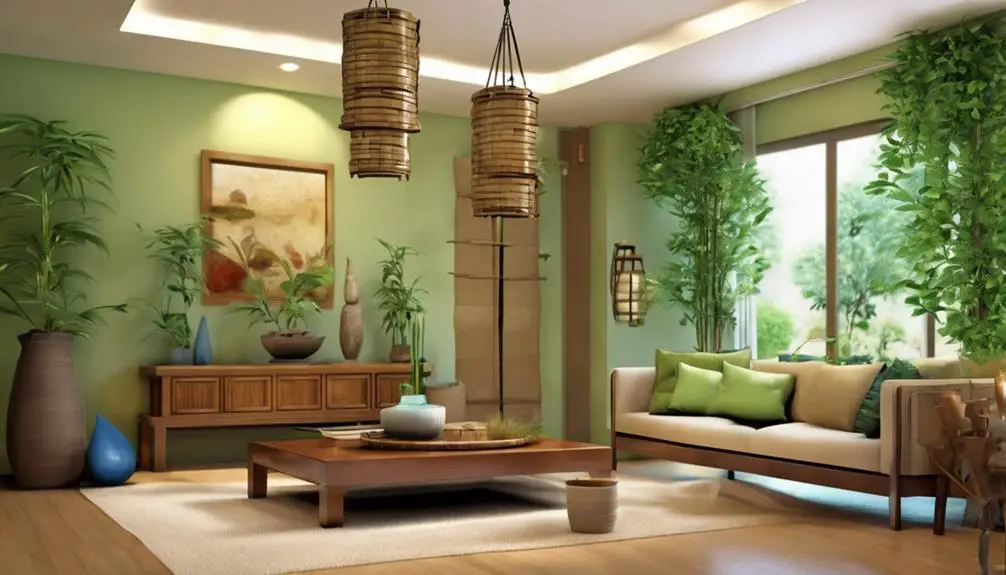
Now that your furniture is perfectly positioned, it's time to infuse your living space with the right hues and accessories for optimal Feng Shui. Color Symbolism in Feng Shui is important; each color carries a unique energy that influences mood, emotions, and wellbeing.
Earth tones, like beige or light yellow, promote stability and calm. For a burst of positive energy, incorporate fiery reds. Greens, the color of renewal and growth, are perfect for creating a fresh, invigorating atmosphere. Blues encourage tranquility and relaxation; ideal for a peaceful retreat.
Accessorizing with Feng Shui isn't just about adding decorative items, but thoughtfully selecting pieces that enhance the flow of energy. Mirrors, for instance, can be used to attract positive vibes and reflect away the negative. Plants, like the lucky bamboo, uplift the mood and purify the air, contributing to a harmonious home environment.
Frequently Asked Questions
What Are Some Common Misconceptions About Feng Shui?
You might've heard myths about Feng Shui being a religious practice or just about furniture placement. These are common misconceptions.
Feng Shui isn't a religion, but an ancient Chinese philosophy focusing on energy flow. It's not only about where you place your furniture, but also involves colors, shapes, and materials.
Misinterpretations can lead to ineffective or negative results, so it's crucial to understand the true principles of Feng Shui.
How Can I Incorporate Feng Shui Principles in My Living Room if It Has an Irregular Shape?
Incorporating Feng Shui principles into an irregularly shaped room can be challenging, but it's definitely doable.
You'll want to focus on two key aspects: color significance and furniture positioning. Select colors that promote the energy you want to invite in. Position your furniture to encourage a balanced flow of energy, using mirrors or plants to correct any sharp corners or awkward spaces.
Are There Any Specific Feng Shui Practices for Homes With Pets?
Yes, there are specific Feng Shui practices for homes with pets. For optimal 'Pet Placement', consider your pet's element based on their species. For instance, fish represent water, birds symbolize air. Place your pet's area in a location that harmonizes with their element.
Dogs, being earth animals, thrive in central areas. Cats, linked with mystery and change, fit well in areas allowing them to observe. Remember, your pet's happiness contributes to positive energy.
How Do I Take Into Account the Personal Feng Shui Birth Element of the Family Members While Designing the Living Room?
Incorporating the personal Feng Shui birth element of each family member in your living room's design can create a harmonious environment. Start by identifying everyone's birth element.
Then, strike an element balance incorporating each one. Use elemental decorations that represent these elements. For instance, if someone's element is wood, you could include plants or wooden furniture.
Can Feng Shui Principles Be Applied to a Living Room That Is Also Used as a Workspace?
Absolutely! You can apply Feng Shui principles to a living room doubling as a workspace. It's all about balancing workspace energies and implementing work-friendly Feng Shui.
Start by separating work and relaxation areas. Use rugs, screens, or plants as natural dividers. Ensure your desk faces the door, a Feng Shui power position. Clear clutter regularly for good Chi flow.
Conclusion
So, you've delved into the basics of Feng Shui, balanced your living room energy, and optimized your furniture arrangement. You've added a splash of color and carefully chosen accessories. Now, your living room breathes tranquility and harmony.
Remember, Feng Shui isn't a one-time fix; it's a lifestyle. Keep tweaking and adjusting, let the positive energy flow freely. Your living room isn't just a space anymore, it's a Feng Shui masterpiece.
Enjoy the serenity you've created.

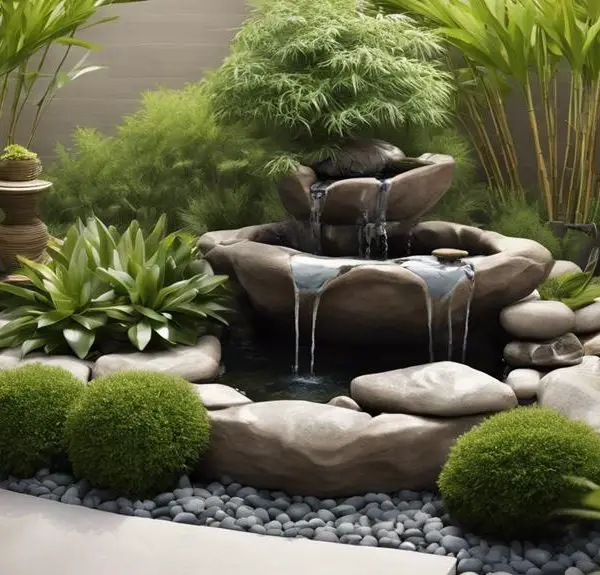
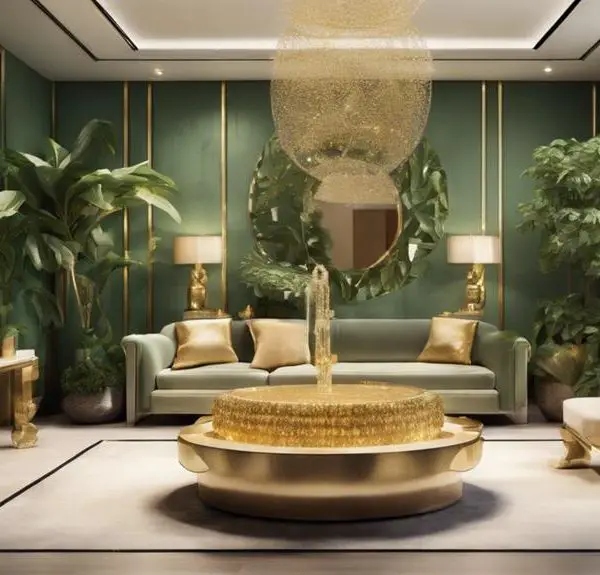
Sign up